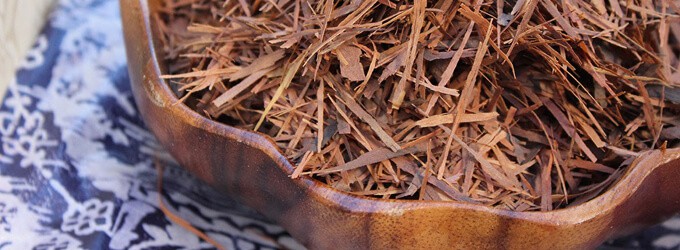The history of the ant tree bark and how it can help for health?

The miraculous qualities of the ant tree bark were known to people in ancient times to cure various ailments. The ancient Incas used the bark of ants several thousand years ago. It helped them in situations where injuries or illness required improving blood circulation in the tissues, as well as strengthening the body’s defenses.
An ant tree grows in nature in Central and South America, ants live in its cavities, and therefore it is also called an ant tree. Nowadays, when studying the composition of the bark of ants, it was discovered that it contains various biologically active substances, as well as the bark of this tree has an unusual quality – no microorganisms or fungi tend to live on it.
The bark of ants helps to fight viruses by inhibiting enzyme processes without which they cannot reproduce, as well as helping to kill fungi. In addition, plant bark powder has immune modulating qualities. The bark of ants also helps to fall asleep better and sleep more fully, as well as regulates blood pressure.
Ant tree bark is a natural antibiotic that is used in folk medicine for many infectious diseases.
The history of the ant tree
Pau D’Arco is a huge deciduous tree found in the Amazon rainforest and other tropical parts of South and Latin America. The height of the tree can reach up to 30 m and the diameter of the wooden base can be from 2 to 3 m. The genus Tahibo includes about 100 large, flowering species of trees, which are often found in South American cities as landscape elements.

It is known that ant bark was already used as a medicine in 1873. And the tree is used as an herbal medicine for a wide range of health problems, including arthritis, inflammation, prostatitis, fever, ulcers, various cancers, and more.
In 1981, the FDA included Pau D`Arco in the list of plants that are not dangerous to health. Mechanisms of therapeutic action of Pau D`Arco antibiotic, antifungal, immune modeling, cleansing, tonic, anti-cancer, anti-inflammatory effect. Destructive effects against Gram-positive bacteria, yeasts, fungi, viruses and various parasites, herpes and HIV have been reported.
Pau D`Arco helps reduce pain, inflammation and other arthritis symptoms. It handles various viruses very well, from colds to AIDS, type I and II herpes, leukemia and sarcoma viruses.
How to use
The ant tree bark can be used for prophylaxis during the flu season or in any other case where there is a high risk of infection.
For a better effect, drink ant tree bark as a tea 1 or 2 cups a day or in capsule form in the morning and evening.
If you are already infected, the product can be used several times a day. There are no contraindications of the usage. Read more about Pau D’Arco.
If you want a consultation how to purchase or use the products, contact one of the health consultants.
How to buy Pau D`Arco?
Product purchase is possible with a 20% discount.
Registration of discount card
Please carefully read the terms of registration using the referral link:
- Clicking this link, you confirm your desire to join Coral Club in Aiga Finstere’s structure, who becomes your consultant/sponsor;
- By clicking on this link, you confirm your desire to receive information about the company’s products, the concept of health of its application and the principles of the company’s work in English.
I agree
Registration form
After registration, you will receive a customer number, which you can use to get a 20% discount (for an unlimited period of time) on all products when shopping in one of the Coral Club stores or online.






